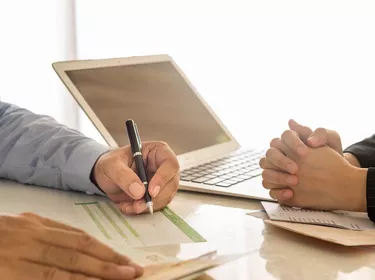Banks must abide by a number of federal regulations, including the requirements of the Patriot Act, when opening new accounts. As a customer, you must meet the bank's requirements to provide valid forms of identification to prove your identity when you open a checking or savings accounts. Understanding those requirements before you visit the local branch or go online can make the process easier. Many banks require two forms of identification to open an account, so have an extra acceptable form of ID on hand when opening an account.

Video of the Day
Driver's License
Your driver's license is considered a valid photo ID, and you can use that document when you open a bank account. When you open an account at a local bank branch, the new account representative will make a copy of your driver's license and keep the copy with the rest of your file.
Video of the Day
Valid Passport
You also can use your passport as identification when opening a bank account. Like a driver's license, a passport serves as a form of valid photo identification, and you can use that document to prove your identity and open your account. When you present your passport, the account representative will make a copy of the document and keep it with the rest of your account records.
Social Security Number
The bank will ask for your Social Security number (SSN) when you open an account, and the branch may request proof of a valid SSN. You can use a number of documents to verify your Social Security number, including your official Social Security card, a recent Social Security statement or SSA-1099 or a brokerage or financial statement that contains that information.
Online Application
Many local, regional and national banks allow customers to open and fund their new checking and savings accounts completely online. But while that online application process is convenient, it does not remove the identification requirement. When you apply for a new checking, savings or other bank account online, you are asked to enter the type of identification you are using, along with the identification number on that document. For instance, you can enter your driver's license number, state of issuance and expiration date to verify your identity and open your account.
Secondary ID
With many banks requiring two forms of ID, it is better to be overprepared than underprepared. Make sure you have a valid government-issued photo ID, such as a driver's license, passport or military ID, to serve as your primary ID. Also have a secondary ID available, such as a major credit card or student ID. A utility bill bearing your name and address, a rental agrement with a current address, documentation of home ownership, a work ID, Social Security card and birth certificate are among the other forms of identification a bank may accept as secondary identification.